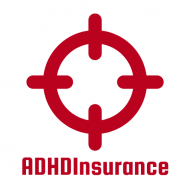When Was ADHD Recognized as a Disorder?
Attention-deficit/hyperactivity disorder (ADHD) is a neurodevelopmental disorder that is characterized by difficulty paying attention, impulsivity, and hyperactivity. It is a condition that has been recognized for more than a century, but the understanding of ADHD and the way it is diagnosed has evolved over time. In this article, we will take a look at the history of ADHD and how it has been recognized as a disorder.
The earliest known descriptions of symptoms similar to ADHD can be found in the medical literature of the late 19th century. In 1902, British pediatrician George Still described a group of children who were “difficult to control” and had impulsivity, hyperactivity, and attentional difficulties. These children were thought to have a moral weakness or to be “abnormal.”
In the early 20th century, the term “hyperkinesis,” meaning “abnormally increased movement,” was used to describe a condition that was thought to be caused by brain damage or injury. This condition was thought to be rare and primarily affecting boys.
It was not until the 1930s that the term “attention deficit disorder” (ADD) was first used to describe children who had difficulty paying attention, but who did not have hyperactivity. This condition was still thought to be relatively rare and primarily affecting boys.
It was not until the 1960s and 1970s that research began to indicate that ADHD was a more common condition than previously thought. This research also suggested that girls were affected by the disorder just as much as boys. With this new information, the term “attention-deficit hyperactivity disorder” (ADHD) was introduced in 1980 in the third edition of the Diagn and Statistical Manual of Mental Disorders (DSM-III).
In the DSM-III, ADHD was defined as a persistent pattern of inattention and/or hyperactivity-impulsivity that was more severe than what is typically seen in individuals at a comparable level of development. This definition was updated in the fourth edition of the DSM (DSM-IV) in 1994, which made a distinction between three subtypes of ADHD: predominantly inattentive, predominantly hyperactive-impulsive, and combined. The latest edition of the DSM, the DSM-5, was published in 2013, and it made some slight changes to the criteria used to diagnose ADHD, however, the overall concept of the disorder remains the same.
ADHD is currently considered a neurodevelopmental disorder and is one of the most common childhood disorders, affecting around 5% of children worldwide. ADHD is still being researched by scientist and it is being considered as a complex disorder that involve several genes, environmental factor, brain development and brain functions.
In summary, ADHD has been recognized as a disorder for over a century, but the understanding of the condition and the way it is diagnosed has evolved over time. The condition was first described in the late 19th century and was known as hyperkinesis, it was later referred to as ADD, and then in 1980, it was officially recognized as ADHD in the DSM-III. Today, ADHD is considered one of the most common childhood disorders, affecting around 5% of children worldwide, and is being studied by scientists to better understand the cause and effective treatments.
Also Check: What is ADHD? Kids and Adults
Dr. Jonathon Preston is a respected mental health specialist dedicated to helping individuals overcome challenges. With advanced training in psychology and decades of experience in the mental health field.

